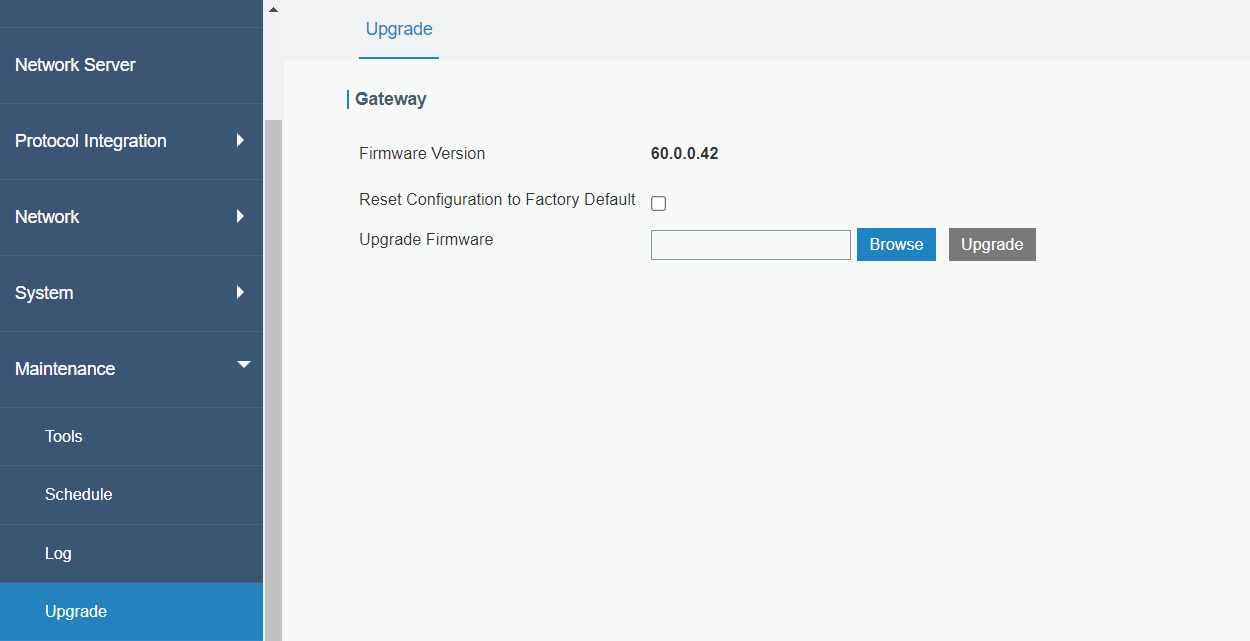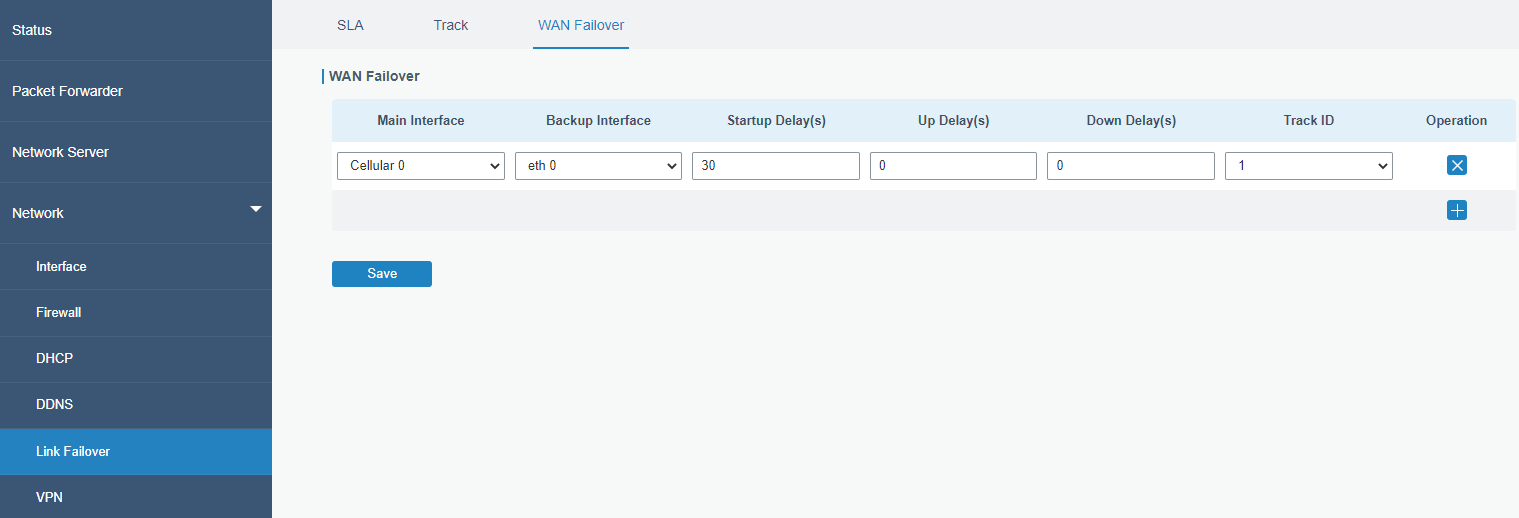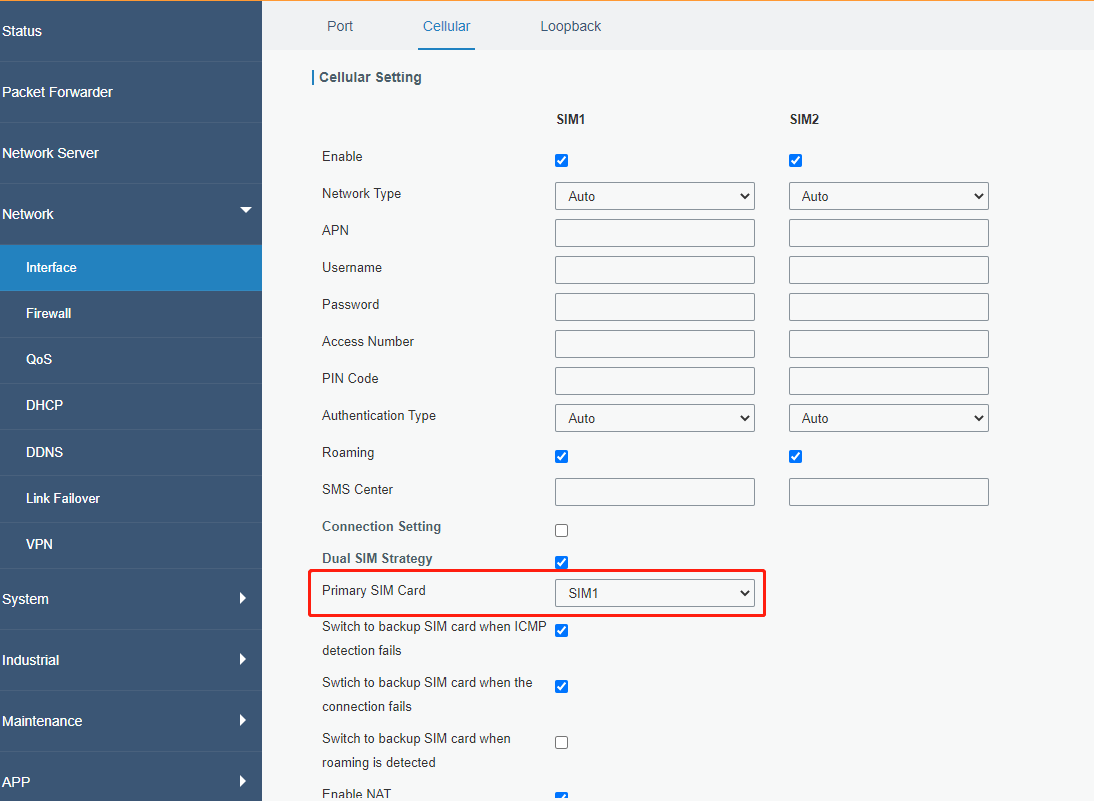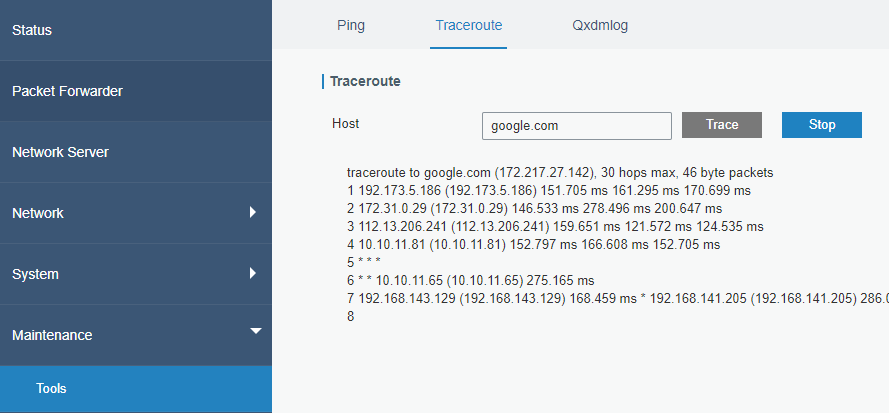Milesight LoRaWAN Gateway supports different network interfaces, including Ethernet, Dual Cellular and WIFI, which are used to bring the router online in different ways, it supports detecting if it is online, if it has lost Internet, the gateway will move it to the next available one. interface automatically.
Before using the link failover feature, we need to ensure that at least two links are available, for example, the cellular interface and the WAN interface.
This is the state of the cellular module. The SIM card is correctly installed and it is already connected to the mobile operator.
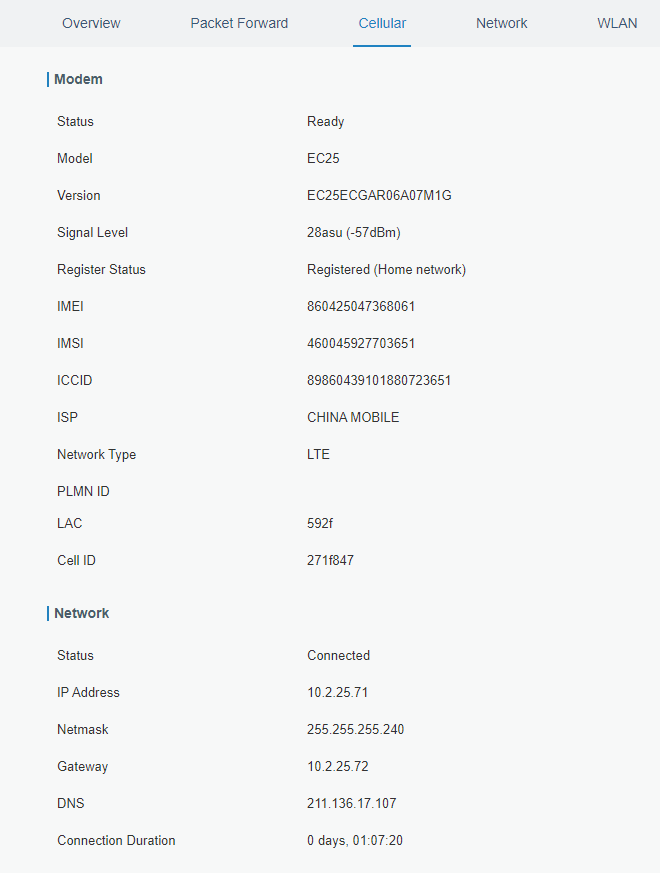
This is the status of the WAN port, it is connected to the switch and well configured.
To trigger the link failover rule, the gateway will start detecting the destination address using ICMP, which means the gateway will ping the address configured in the SLA page according to the scheduled interval. If there is no response on both addresses, the current Link will be considered 'Down', the Backup Interface will take over to send the sensor data to your server platform.
In this example, the gateway will ping 114.114.114.114 and 8.8.8.8 every 15 seconds, if there is no response 3 times, the link failover rule will be triggered.
There is a default link failover, which makes cellular the primary interface and the WAN port is the backup.
If you want to make WAN the primary interface, you can change it here.
Additionally, since Milesight UG85 and UG87 support dual SIM, they also work in cold standby mode. Here we can configure the main SIM card, if SIM1 is selected, then SIM2 will be in standby.
Ps.
1. To check which route was used currently, we can try the route trace tool on the 'Maintenance->Tools' page to get it.
2.Ping detection will cause cellular data to be used. You can adjust the “Data Size” and “Interval” value to make it smaller.

